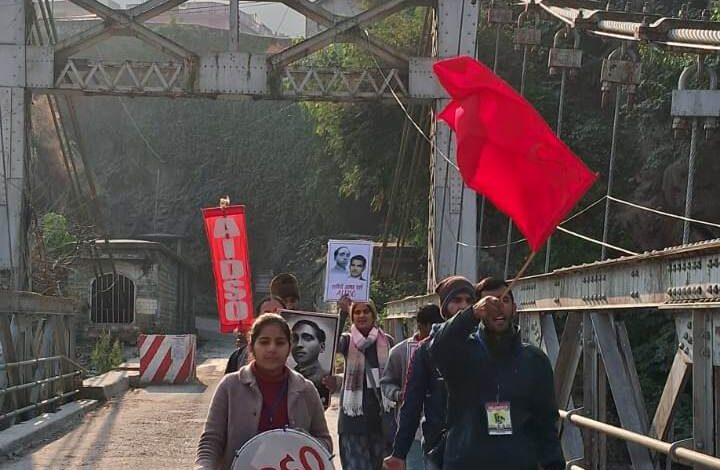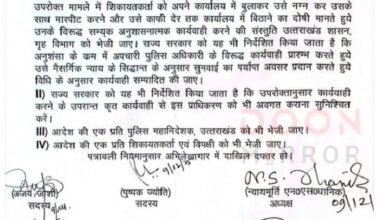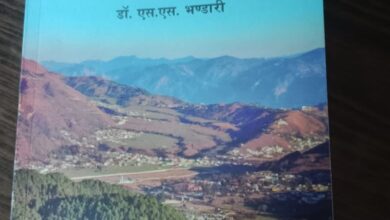Martyrdom of Nagendra Saklani and Molu Bhardhari remembered by AIDSO

Martyrdom of Nagendra Saklani and Molu Bhardhari remembered by AIDSO
Dehradun, Jan 18
The martyrdom Nagendra Saklani and Molu Bhardhari was an important historical event of Uttarakhand hills. On 11th January 1948 these young revolutionaries were shot dead by the forces of erstwhile Tehri Maharaja for trying to unfurl the tricolor in the princely state of Tehri.
The young volunteers of All India Democratic Students Organisation (AIDSO) undertook a Yatra to commemorate this glorious history of people’s power over an exploitative system from January 11, 2024. This Yatra covered the same spots which were undertaken by general public in 1948.
To understand and make people aware of the glorious heritage of revolutionary movement of Uttarakhand this was the first of such Yatra. During the whole Yatra, AIDSO volunteers got tremendous support from people who appreciate the initiative of students to link with the glorious history of powerful movement in Tehri. Later, a public meeting was held at New Tehri town at the conclusion of the Yatra and rich tributes were paid to the martyrs and pledge taken to undertake the work of such revolutionaries.
Even after independence from Britishers in 1947, a large part of India was under the princely states and was not allowing any democratic reforms in their respective kingdoms. In 1938 when Netaji Subhash Chandra Bose became Congress President at Haripura, he had emphasized on “Praja Mandal” movements going on in such princely states to be included in the national freedom struggle.
The present state of Uttarakhand was also political divided between two parts one was ruled by British colonial system and another by Maharaja of Tehri Garhwal. In Tehri state there was a struggle against autocratic rulers. A legendary freedom fighter Sri Dev Suman who conducted 84 days long hunger strike in the prison for democratic reforms in Tehri kingdom sacrificed his life in 1944.
After independence, tricolor was hoisted in British Garhwal but the king’s forces did not allow tricolour to be hoisted as they have not joined newly independent Indian state.
A popular movement for Azad panchayat started in Kirti Nagar in Tehri Garhwal by young communist leader named Nagendra Saklani and to crush the movement, the police of the king opened fire killing Nagendra Saklani and Molu Bhardhari on the spot. This angered the common people who ransacked government properties and captured the police personnel.
The news of that brutal killing spread like wild fire across the hills, hundreds of people from nearby villages gathered in Kirti Nagar. Notable figure Chandra Singh Garhwali who came from the long prison term of Andamans, after his unit had refused to fire on peaceful protesters in Peshawar in 1930. He and other political activists, INA soilders suggested that the body of these revolutionaries should not be cremated in Kirti Nagar but instead to be taken to the capital city of Tehri for cremation.
The cremation procession of these young revolutionaries ignited the popular movement till now been suppressed by feudal cruelty on the general public. During the 60-65 km long march covering villages in Tehri, everyone come forward to pay the last tributes to these young heroes. When after 3 days, it reached Tehri, to everyone’s surprise, the so called ‘powerful’ king and his ministers had fled the palace fearing people’s anger.
Tehri state was liberated from royal atrocities, royal flag was thrown away and tricolor was hoisted along with Red flag at royal palace.





